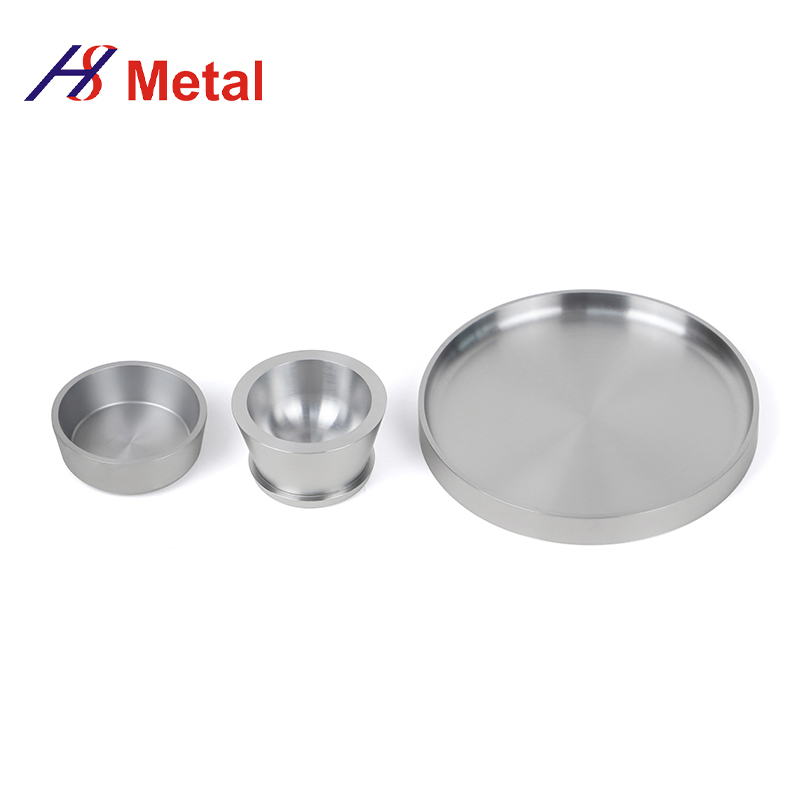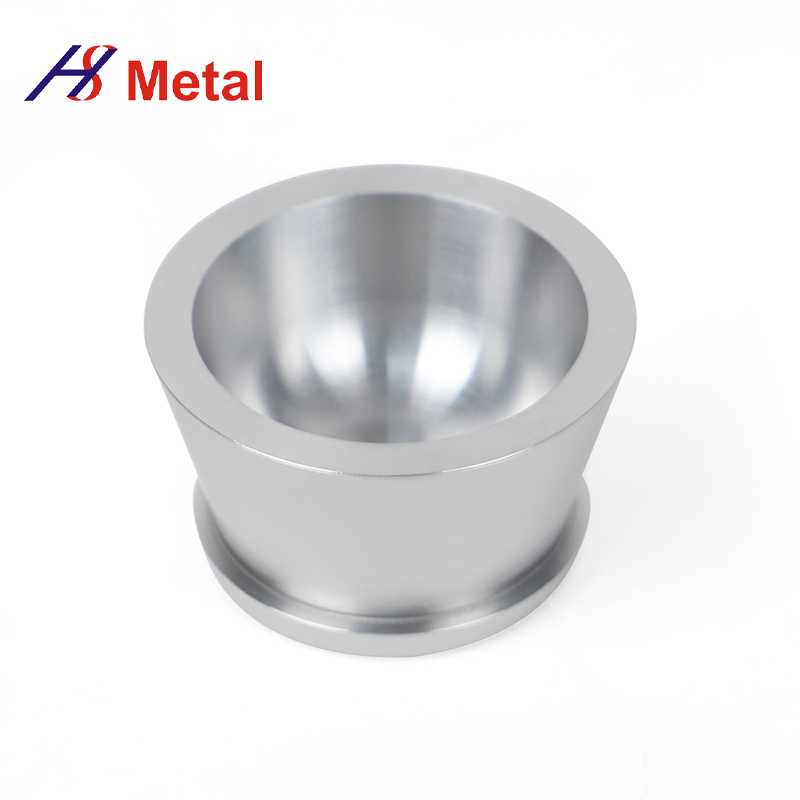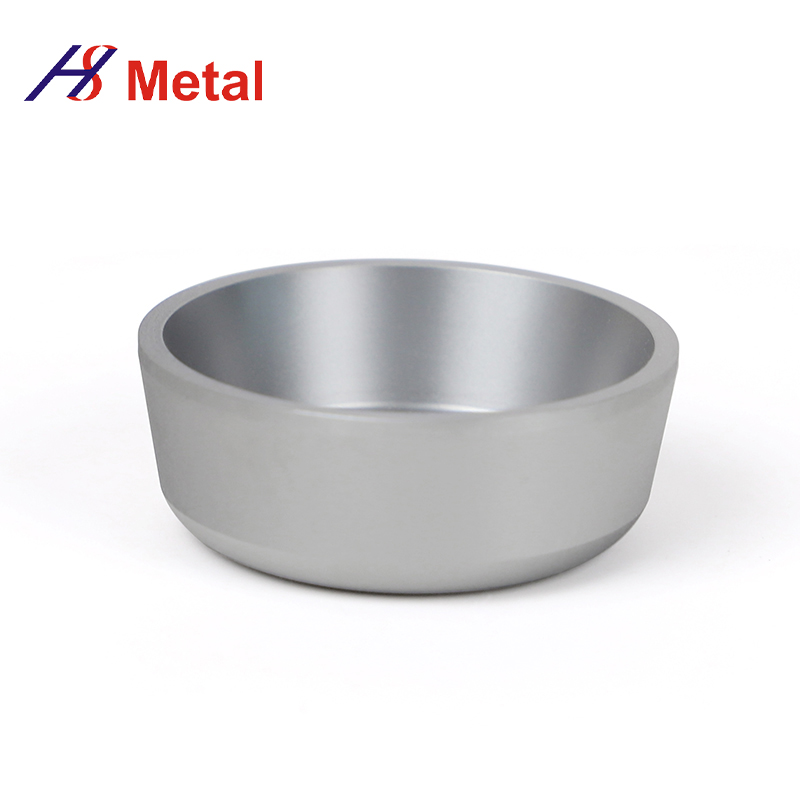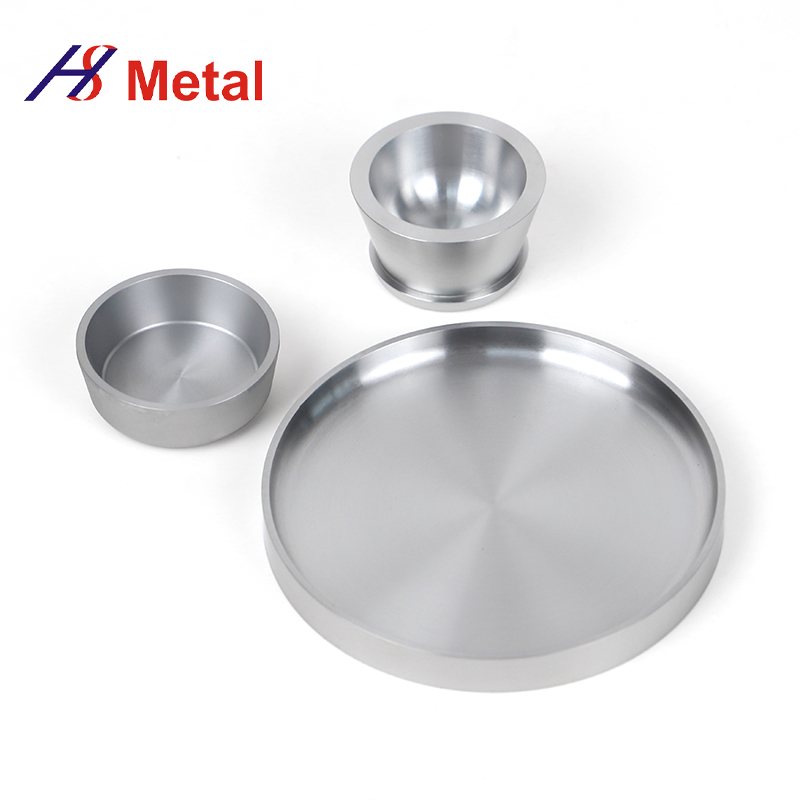Email:
sales@hypersolidmetal.comWhatsapp:
8613592098266
Email:
sales@hypersolidmetal.comWhatsapp:
8613592098266In actual use, tungsten crucibles often face the risk of crack formation, which not only affects their service life, but also directly affects process stability and product quality. Therefore, how to effectively prevent the formation of cracks has become a key concern in the industry.
First, material purity and quality control are fundamental to preventing crack formation. High-purity tungsten powder raw materials help reduce internal impurities and grain boundary defects, improving the overall density and uniformity of the crucible. Impurities can easily become stress concentration points for cracks, leading to crack initiation and propagation during high-temperature thermal cycling. Therefore, during the powder metallurgy production of crucibles, strict control of raw material purity and sintering processes to ensure a dense and porosity-free product are key steps in crack prevention.
Second, optimizing processing techniques is crucial for crack prevention. Tungsten is inherently brittle and hard, easily subject to mechanical stress and microcracks during processing. Using CNC precision machining, optimal cutting parameters, and a multi-stage polishing process can significantly reduce surface defects and stress concentrations. Furthermore, smoothing the inner wall not only improves heat transfer efficiency but also reduces the risk of stress concentration and crack initiation points caused by surface roughness.
Furthermore, proper heat treatment and thermal cycle management are crucial for preventing crucible crack formation. Tungsten crucibles undergo repeated heating and cooling cycles during high-temperature operation. Rapid temperature fluctuations can easily lead to concentrated thermal stresses, resulting in thermal fatigue cracks. Therefore, adopting slow and uniform heating and cooling rates, combined with a scientific heat treatment process, effectively releases internal stresses in the crucible and significantly reduces the likelihood of thermal cracking. Furthermore, avoiding rapid heating and cooling, as well as sudden temperature swings, is an effective measure for extending crucible life.
In addition, environmental control also plays a significant role in preventing crucible cracks. During high-temperature operation, the crucible should be protected from exposure to reactive gases such as oxygen and water vapor to reduce material embrittlement caused by oxidation and corrosion. A high-quality vacuum or inert atmosphere can effectively protect the crucible surface, preventing surface defects caused by chemical reactions and reducing the likelihood of cracks.
Finally, standardized operating procedures and routine maintenance are essential. Operators should strictly adhere to the equipment’s heating profile and maintenance schedule, and regularly inspect the crucible’s surface and structural integrity to promptly detect microcracks and damage. Reasonable frequency of use and load conditions, and avoiding overload operation, are the basis for ensuring the long-term and stable operation of the tungsten crucible.



